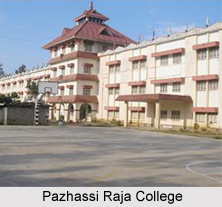 Education in Wayanad district is quite well organised. Wayanad district is a Single Education District. This means that there is one Deputy Director, one District Education Officer and three Assisstant Educational Officers looking to the educational structure and requirements of the entire district. There are a total of 301 Schools in this district, consisting of 149 Lower Primary Schools, 79 Upper Primary Schools, 29 High Schools, 32 Higher Secondary Schools, 6 Vocational Higher Secondary Schools and 6 Special Schools. It has also a District Institute of Education and Training, located at Sulthan Bathery. Besides, a Kendriya Vidyalaya, a Jawahar Navodaya Vidyalaya and 8 CBSE Schools and 1 ICSE School are functioning in this District.
Education in Wayanad district is quite well organised. Wayanad district is a Single Education District. This means that there is one Deputy Director, one District Education Officer and three Assisstant Educational Officers looking to the educational structure and requirements of the entire district. There are a total of 301 Schools in this district, consisting of 149 Lower Primary Schools, 79 Upper Primary Schools, 29 High Schools, 32 Higher Secondary Schools, 6 Vocational Higher Secondary Schools and 6 Special Schools. It has also a District Institute of Education and Training, located at Sulthan Bathery. Besides, a Kendriya Vidyalaya, a Jawahar Navodaya Vidyalaya and 8 CBSE Schools and 1 ICSE School are functioning in this District.
As regards higher education, it was a major problem in the district in the past. Due to the lack of educational facilities in the district, the students wishing to pursue higher education had to move to neighbouring districts. Over the course of time, this scenario changed and marked improvements have been made in the field of higher education. The district of Wayanad district now has six first grade colleges, two Polytechnics, one Industrial Training Institute, four B.Ed Centres and three Teachers Training Institutes. Besides, there is an Engineering College, a Veterinary College and Oriental School of Hotel Management for students interested in hotel management and catering. Most of the colleges located here offer the basic BA, Bsc and Bcom courses. Some of the noted colleges of the district are Pazhassi Raja College at Pulpally; St. Mary`s college at Sulthan Bathery; W.M.O. Arts and Science College at Kalpetta; the N.M.S.M. Government College at Puzhamudi; Mary Matha Arts and Science College at Vemom in Mananthavady; Government College at Nalloornadu in Mananthavady and the Government Engineering College at Mananthavady.
Despite the steady progress made in the field of education, the issue of tribal education is still a problem in the Wayanad district. In spite of consistent efforts, they are yet to be imbibed into the mainstream. Many of them are admitted to school, but are unable to remain and drop out early without completing their education. Efforts however continue for the education of tribals in the district. There are Residential schools that have been set apart for the education of tribal children. They are located at remote set areas where they can be easily accessed by the tribal population. These schools have better facilities and are well run.
Thus discussed above is the educational scenario in the district of Wayanad.



















